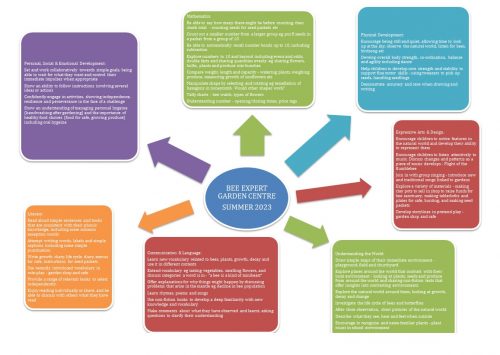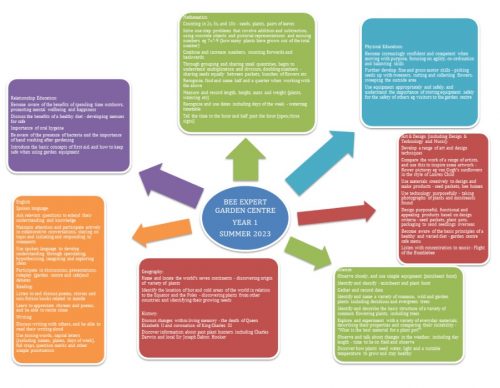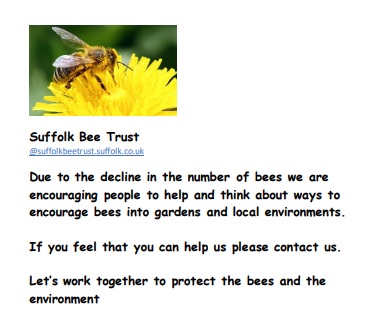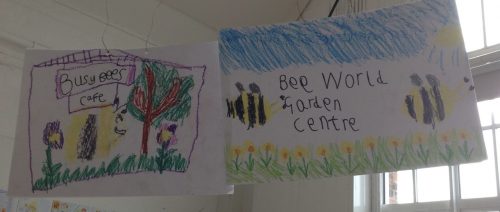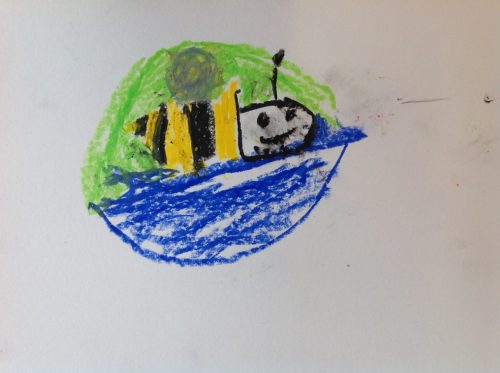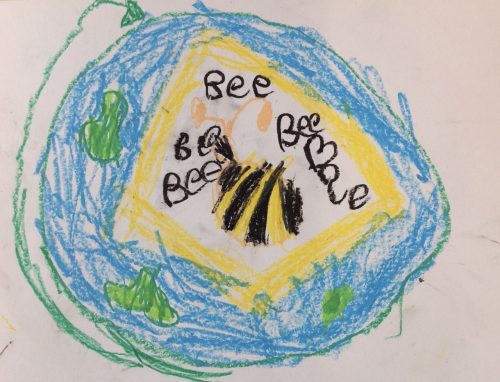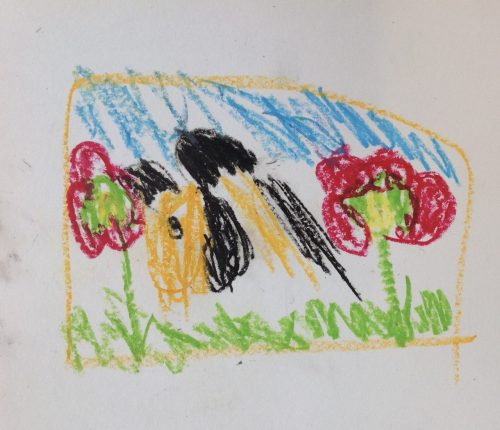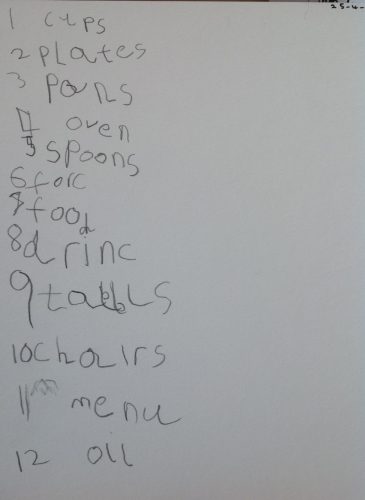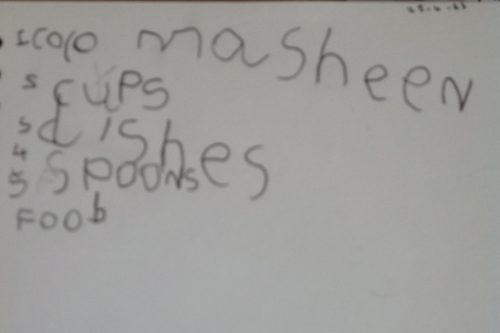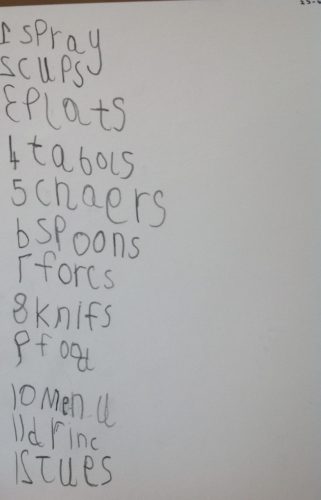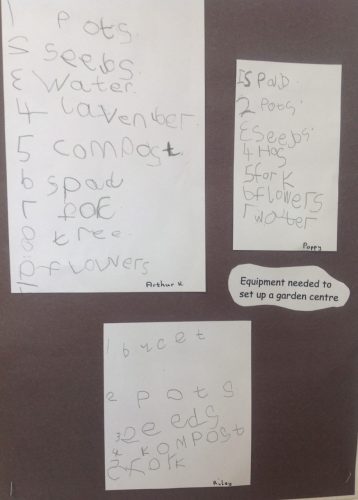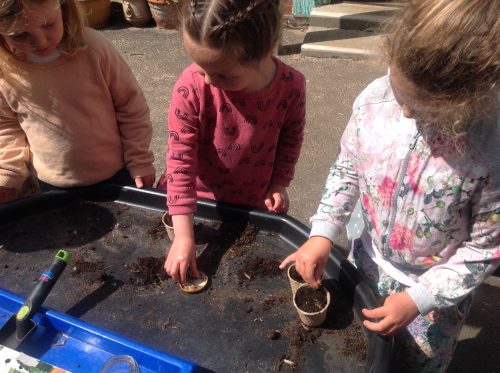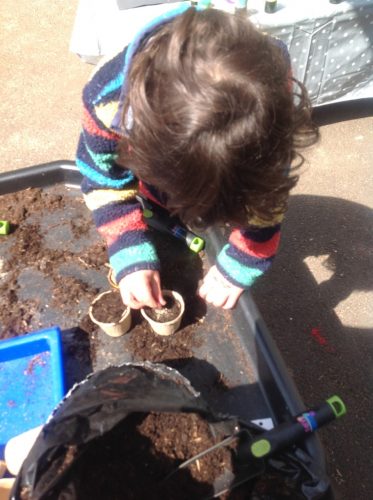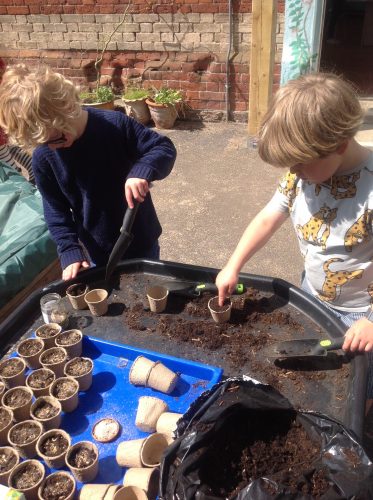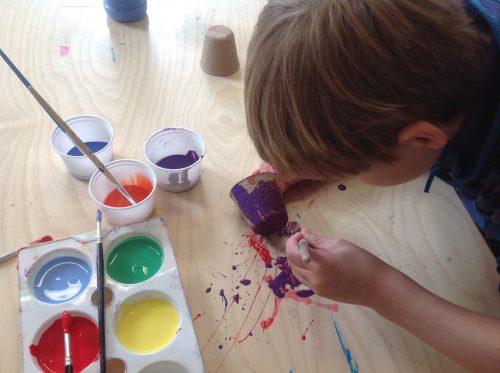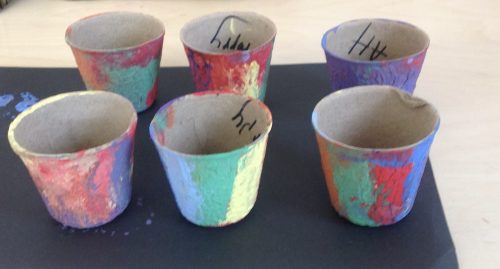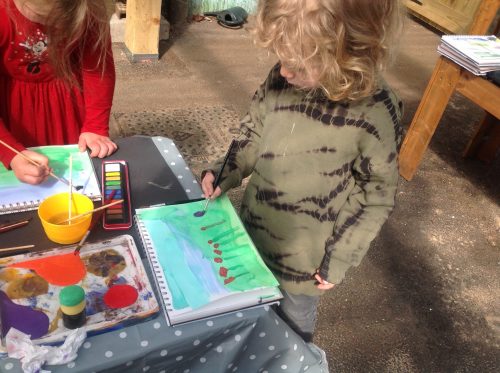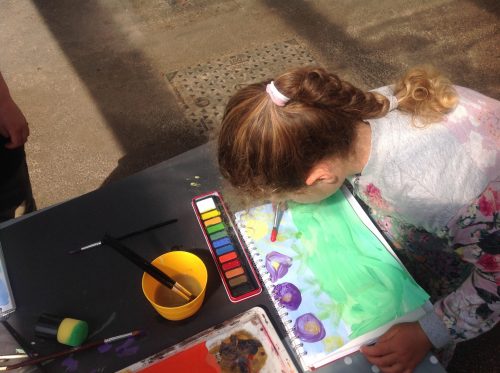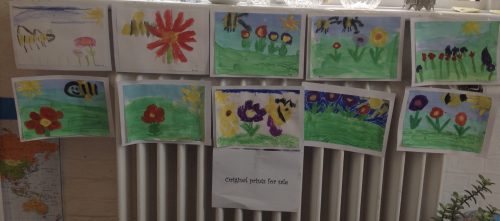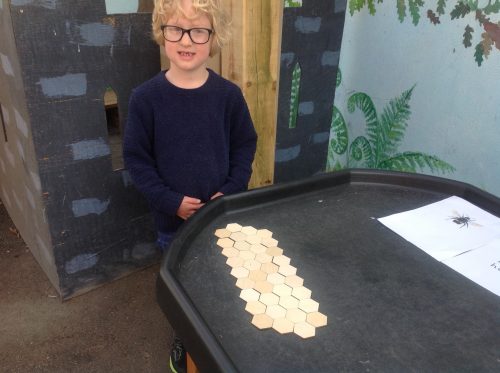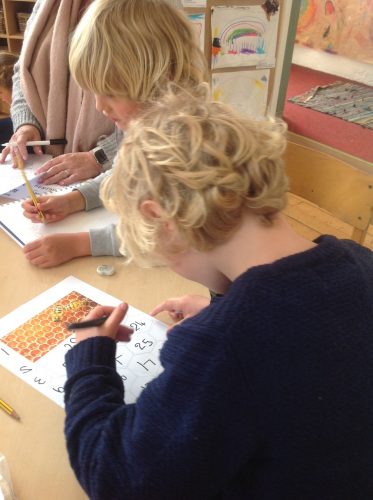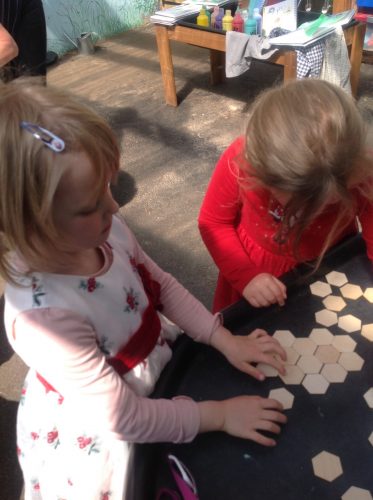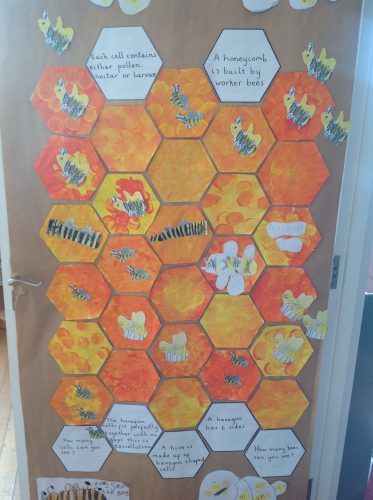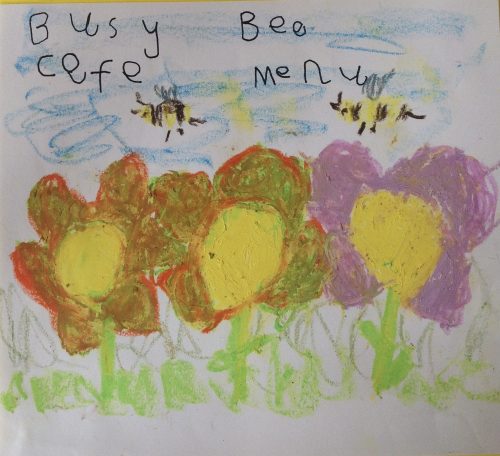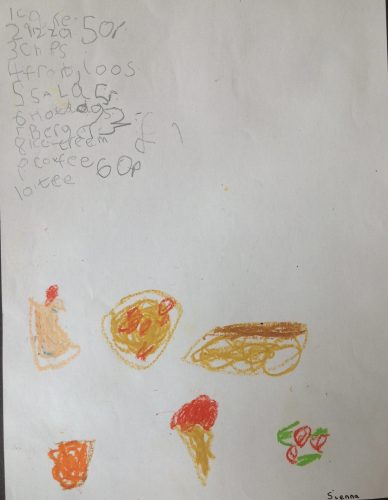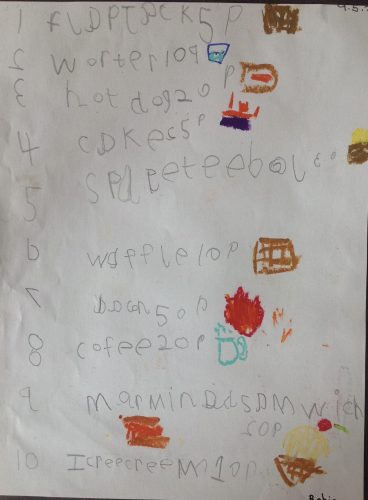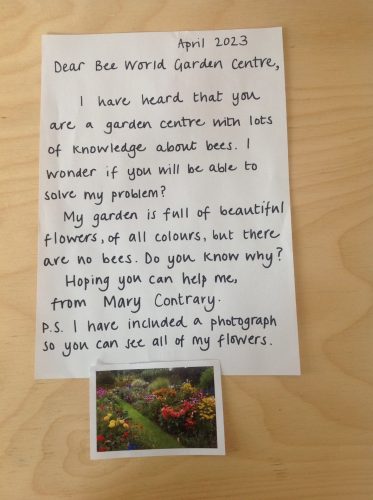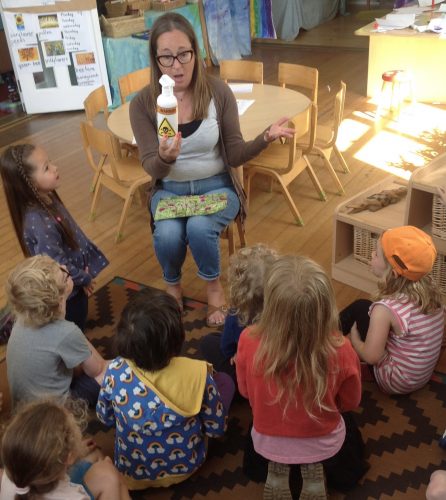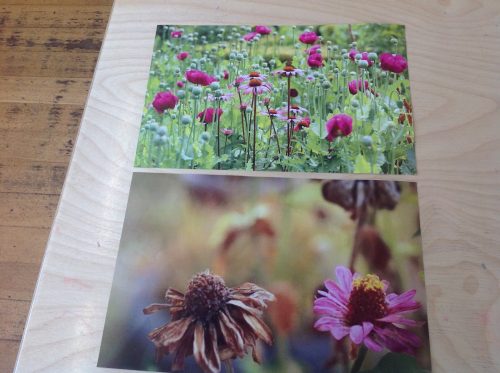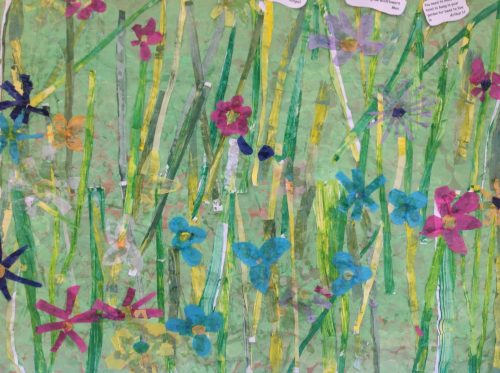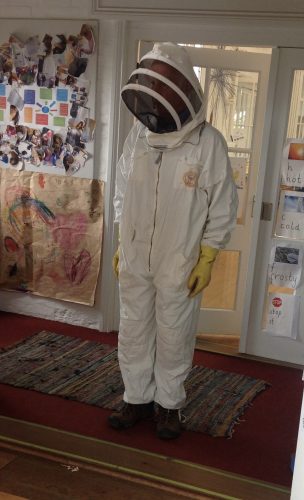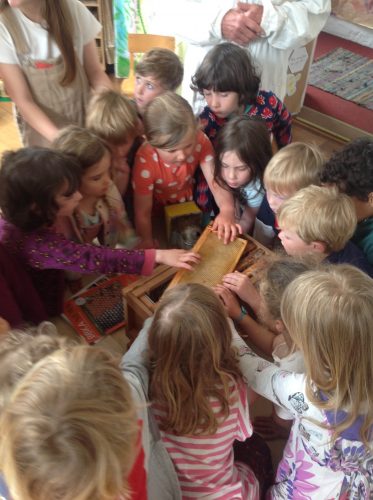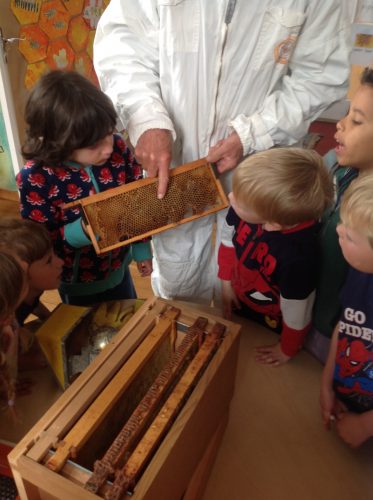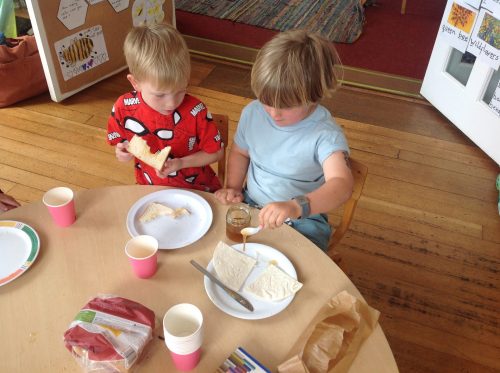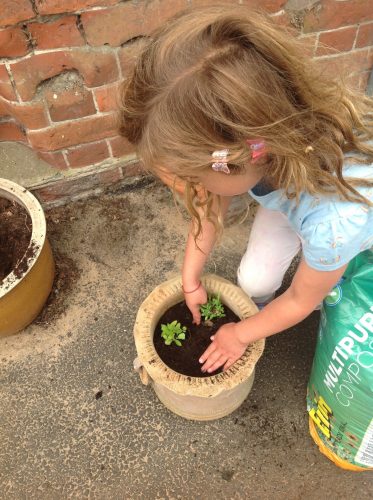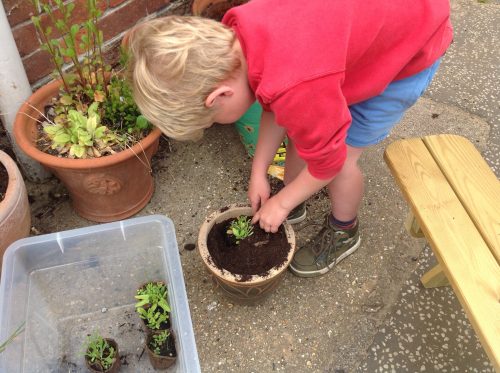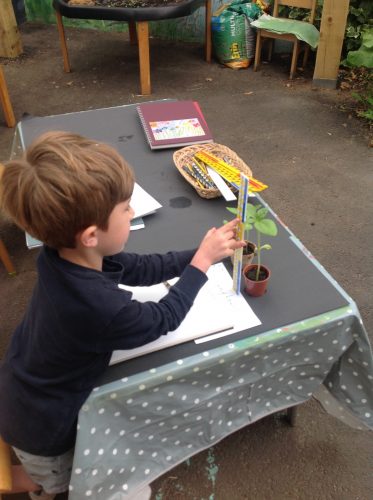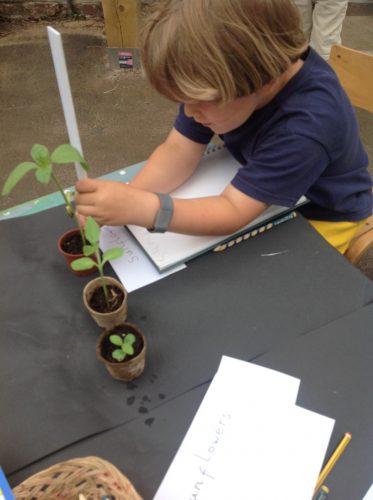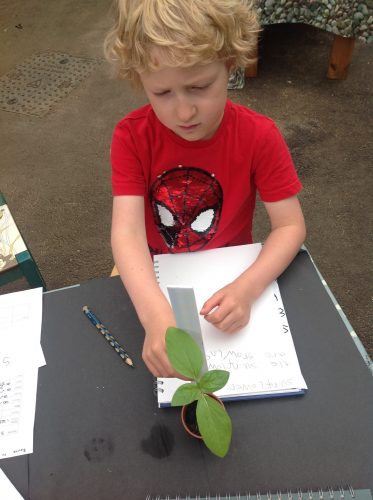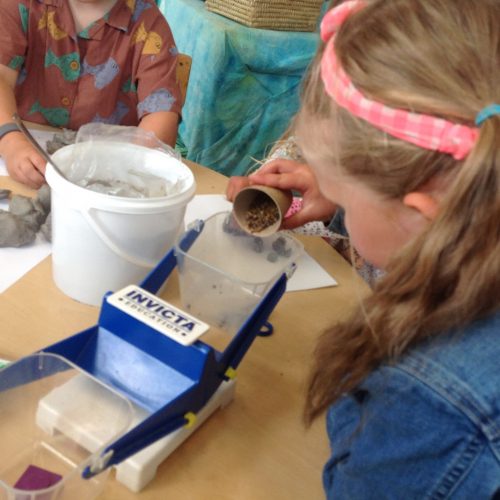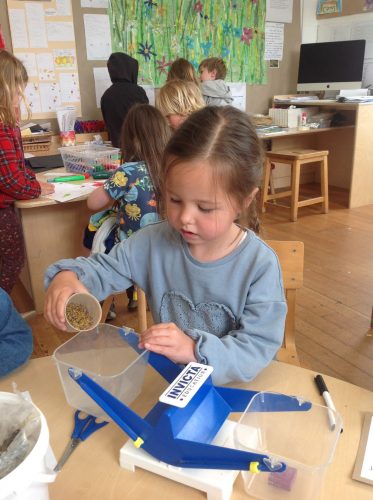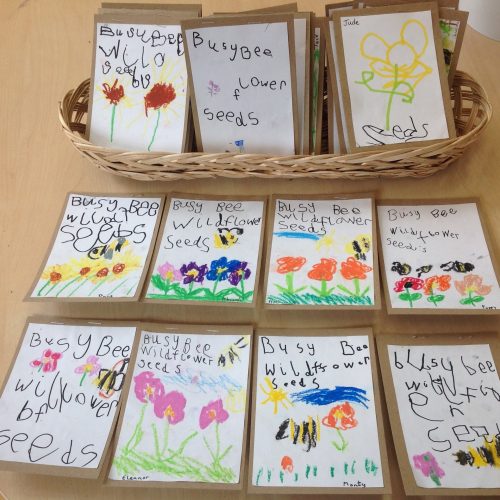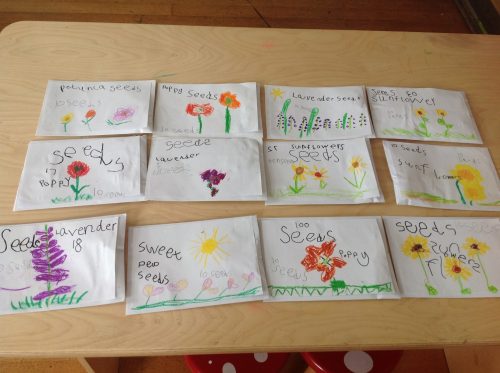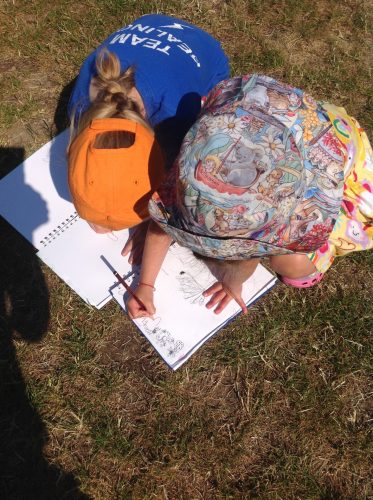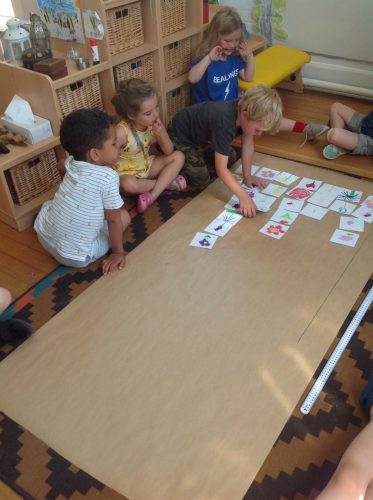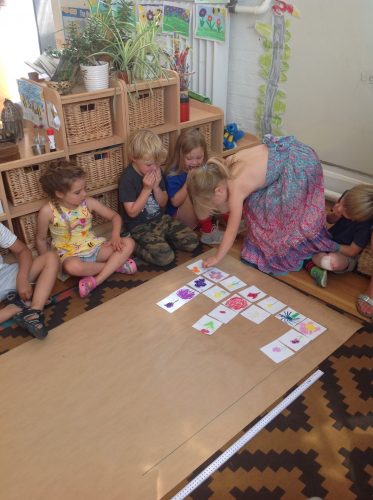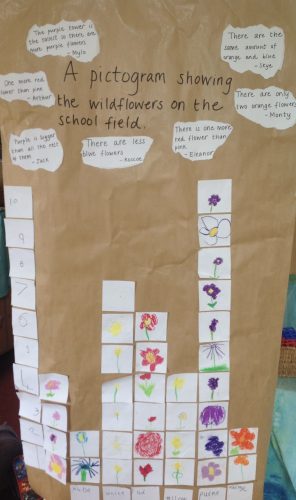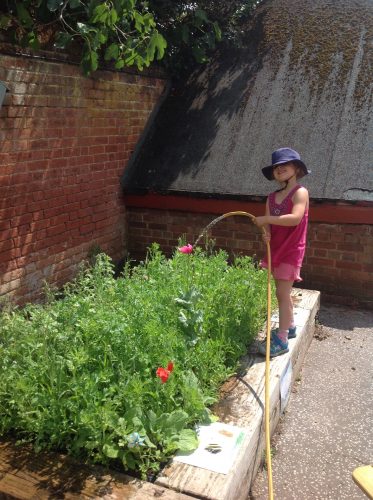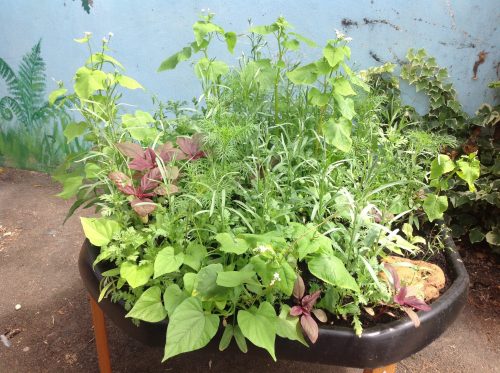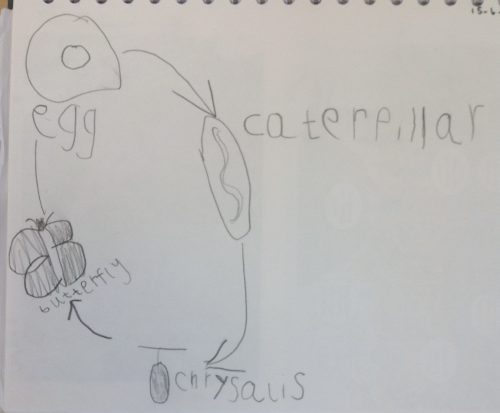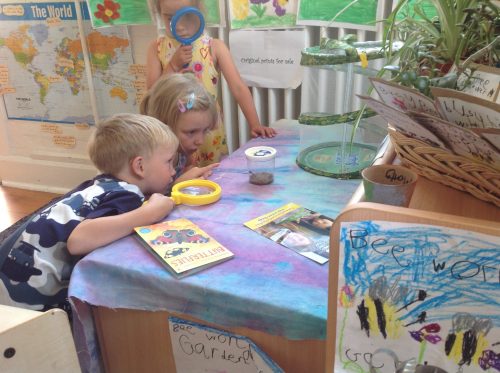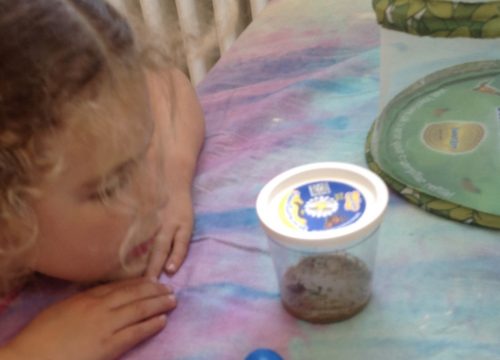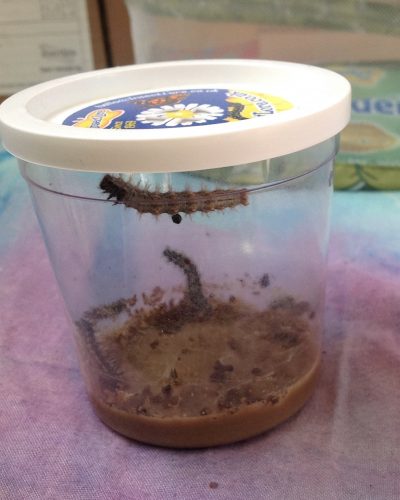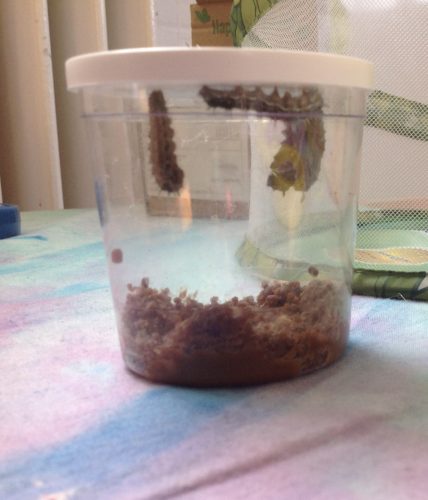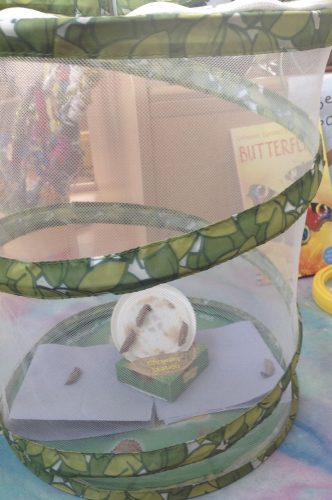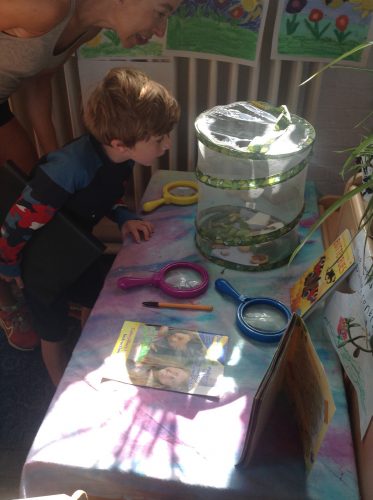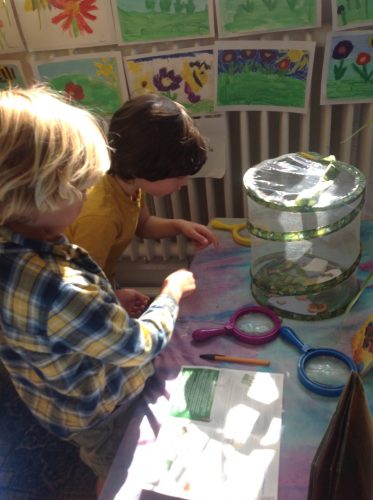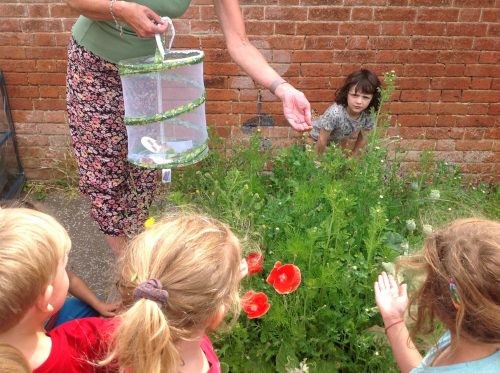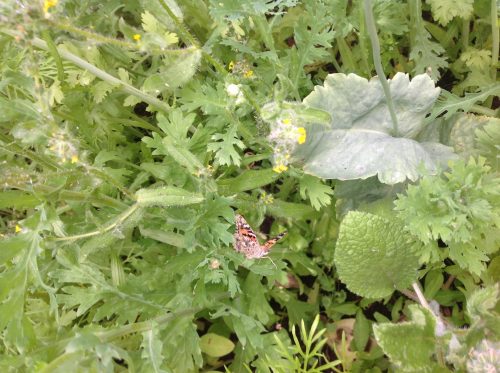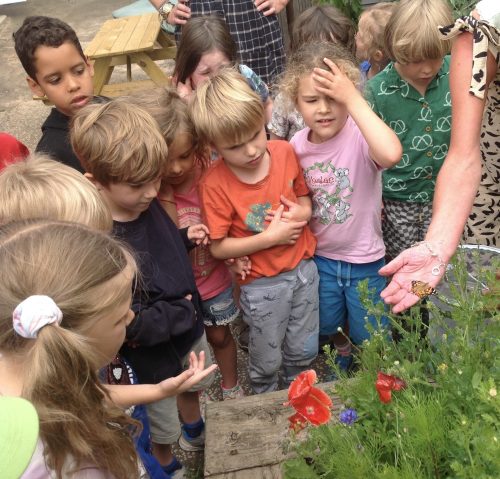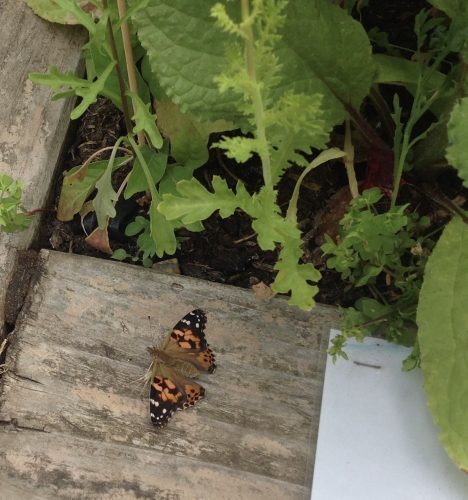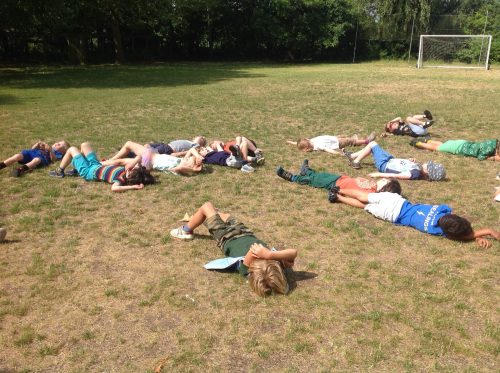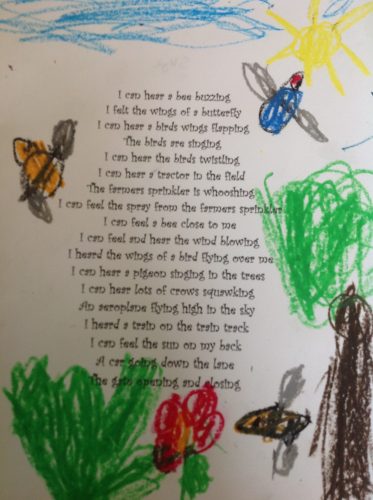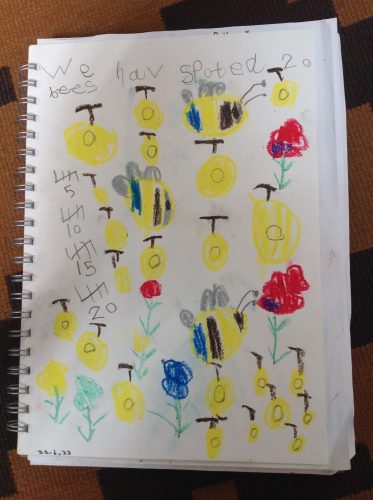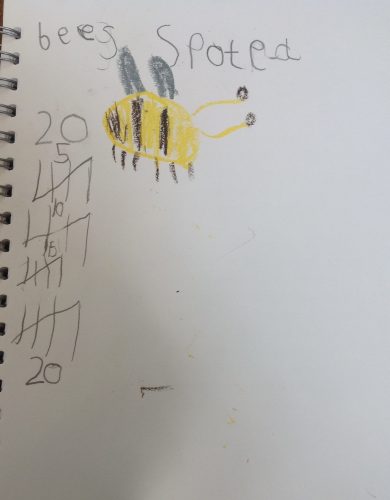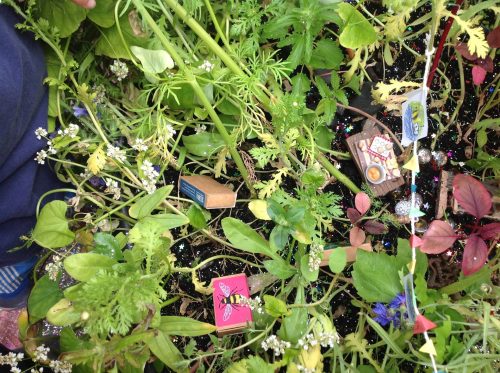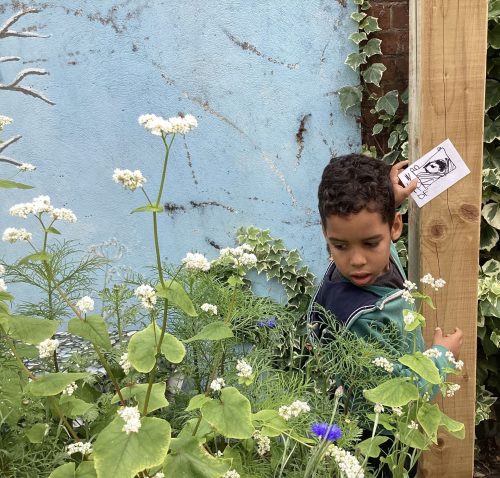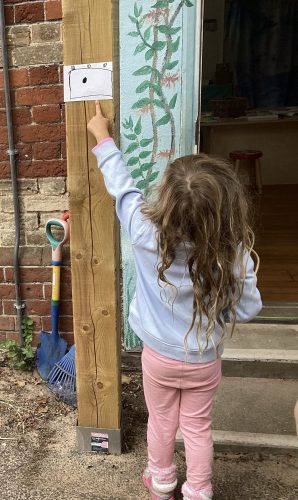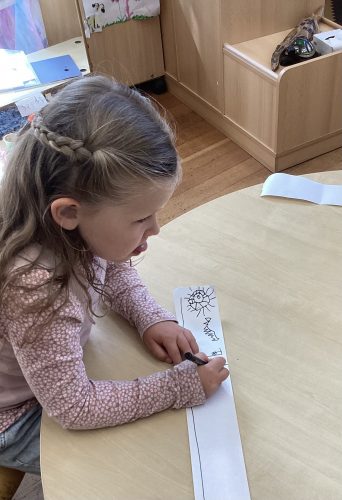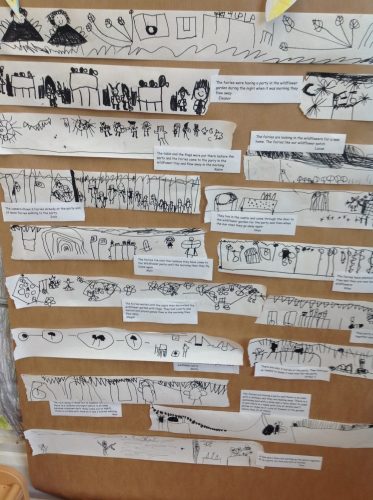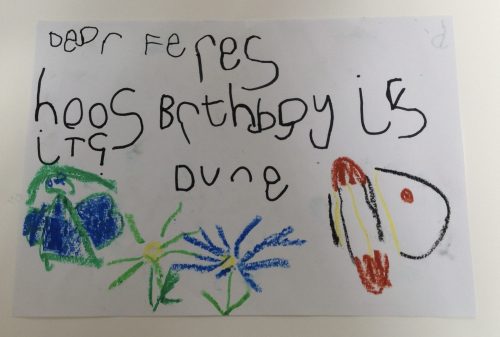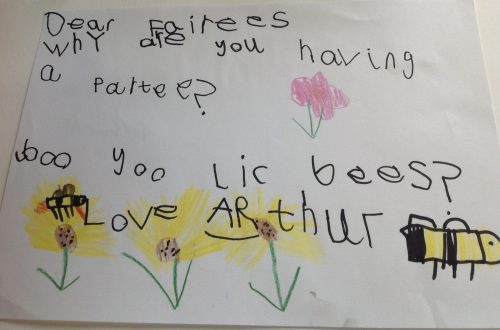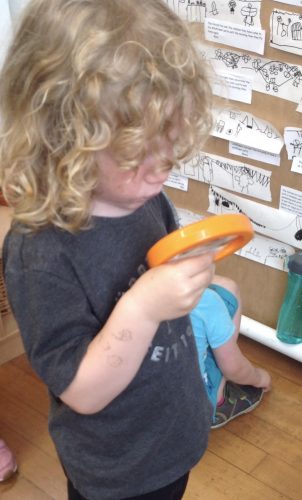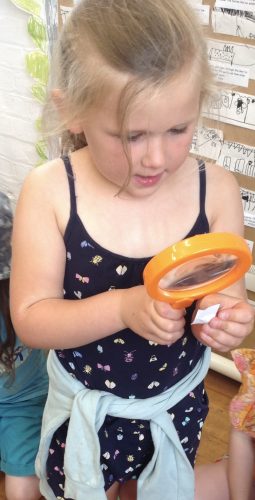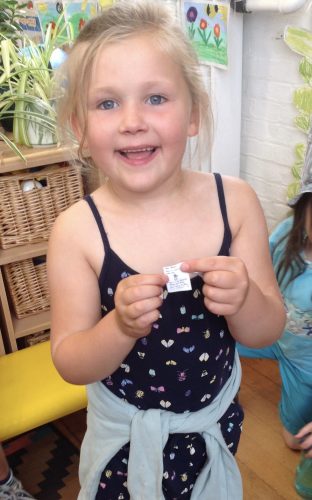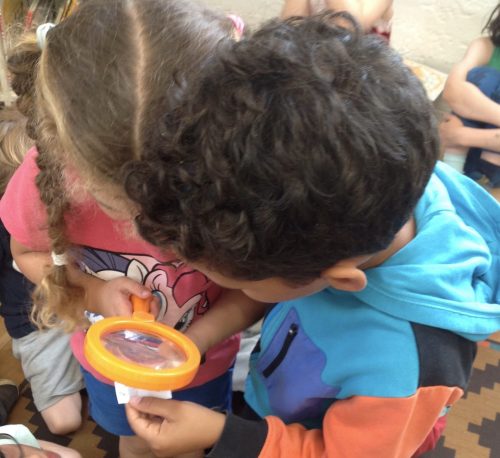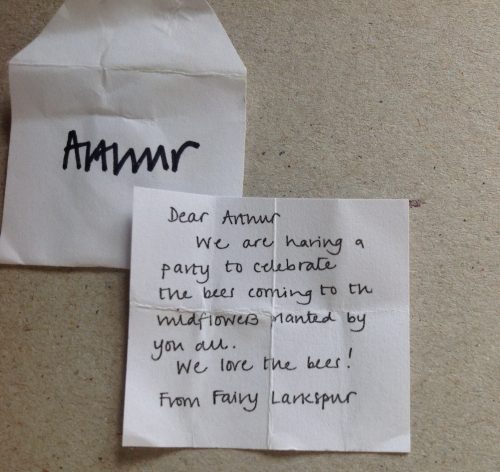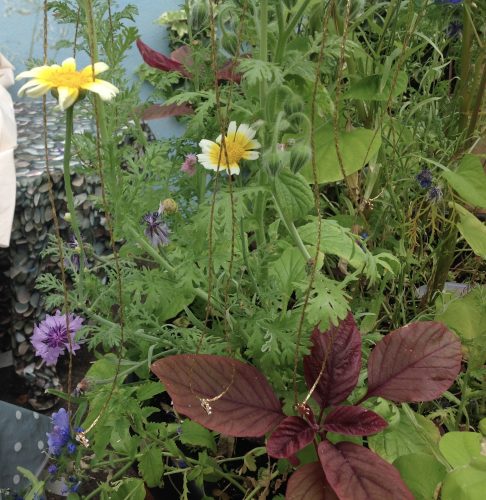Week 1
We arrived back to an e-mail from Suffolk Bee trust
During the following discussion we realised how many bee experts we have:
“Bees make honey using pollen and nectar they collect from the flowers”
“They take the pollen back to the Queen Bee back in the hive or nest”
“The queen is bigger than the other bees and has a white mark on her back”
“The queen is very important – she is the boss of the bees, and if she goes somewhere the bees all follow like follow the leader”
“They love to drink nectar from the flowers and turn it into honey”
“They make honeycomb out of beeswax”
“Bees need flowers to make honey”
“Bees really like lavender and sunflowers”
It became clear that we were the right people to help!
“We can grow lots of flowers to attract the bees and butterflies”
“Grow lots of lavender”
“We could try and build a bee hive”
“I’ve been to a garden centre where they sell lots of flowers”
“We could set up and run a garden centre”
“We could make and sell bee houses”
“Some garden centres have a cafe”
“We could run a cafe as well”
After deciding on the company name, we worked together to produce our company logo and discussed our different roles.
Week 2
We discussed the many roles of people working at a garden centre and cafe, before then deciding on what each employee would like to specialise in. These include a lavender expert, grass cutter, plant expert, arborist, flower sprayer, events manager (overseeing both the garden centre and cafe), a potter, a waiter and waitress, chef and cashiers.
The focus of the week was preparing the garden centre and cafe to be ready for opening. We thought about the equipment needed for both the garden centre and cafe, making lists which involved writing and some numberwork.
We also need to quickly develop our stock of plants to sell, so spent time planting seeds and talking about the ideal growing conditions.
Weeks 3 & 4
The team have been talking lots about what things to sell in the garden centre as well as busily planting seeds, which are beginning to show signs of growth, and painting pots
Someone suggested that a good way to raise money for the garden centre would be to sell their artwork, which could be displayed as an art gallery by the till.
As bee experts, we have also studied the inside of a bee hive – looking closely at cells, hexagons (being a six-sided shape) and investigating how the hexagonal cells fit together in the hive – introducing the idea of tessellation.
In readiness for the opening of Busy Bees cafe this summer, the team have been preparing the summer menus.
We look forward to welcoming our first customers next week!
Week 5&6
We arrived on Monday morning to a letter from Mary Contrary. She had heard that we are bee experts, and wondered if we could help her with a problem:
“She has no wildflowers”
“She needs to plant the right colour flowers for the bees”
“Maybe she needs a hive for the bees”
We wrote back to Mary with our suggestions:
Later in the week we had a surprise visit from Mary. She had received our letters and wanted to discuss our ideas more, and worryingly she had also found a spray bottle in her garden which she brought along, together with some recent photographs showing her flowers beginning to die.
“It’s a pesticide. The farmer may be using it on their crops”
“The farmer sprays it on his fields and it went in your garden. They spray it to kill the bugs”
“The farmer wants to spray to make his crop grow faster”
“The flowers are dead so the bees cannot collect the nectar”
“It is OK to eat the crops if wash it first to wash off the poison”
“Perhaps she could make a bee corridor in her garden – a line of flowers that encourage bees to come into your garden”
Mary asked if we would be able to help her to deign a new garden which would include all of these ideas
A fellow bee expert visited us, which was a great hands-on opportunity for our experts to share and expand their knowledge.
“What happens when you put smoke into the hive?”
“How many bees live in the hive?”
“Do bees know that if they sting they die?”
We impressed Tim the bee keeper with our knowledge.
“The six-sided cells are hexagons”
“They are joined together, that’s called tessellation”
“That cell has got honey in it”
“The bees eat the spare honey in the winter”
(Touching the honey comb) “It’s sticky”
Tim kindly left us with a jar of runny honey and some set honey which we enjoyed spreading on bread for our snack.
Week 7
Following our staff holiday last week, we started this week catching up with jobs around the garden centre; weeding, planting more wildflowers and tending to our rapidly growing flowers.
We wondered how much taller the plants had grown over the week’s holiday, and decided to measure some of the tallest ones with a ruler, counting in centimetres
The Suffolk Bee Trust contacted us again this week asking for some further help, this time in weighing out wildflower seeds for the seed packets to be sold by the charity
We also designed the seed packets and added written instructions. These fabulous seed packets are available for you to buy – please come in and see us!
Weeks 8 & 9
The garden centre staff decided it would be a good idea to find out if we are growing the right colour flowers to attract bees in our immediate environment. They decided to find out how many of each colour flower are growing by doing a tally chart. First we counted how many of each colour flower we could find, and then drew a picture to represent each flower before all coming together to present this information on a pictogram.
All of this hot weather has kept us very busy keeping our new wild flower patches well watered to encourage bees into our garden centre’s raised beds.
A customer presented us with a Lemon Tree to tend to. As this was an unknown plant to us, we had to think about and find out the ideal conditions needed for the tree to thrive. We came together to share any previous knowledge, and this discussion led us to think about other plants that can be found around the world
“Orange and lemon trees grow in Spain, Greece and Tenerife”
“Most orange trees grow in the Mediterranean”
“I have picked an orange from a tree in Spain”
“Olive trees grow in the Mediterranean countries as well”
“Mangoes grow on trees in Africa”
“Cactus plants grow in hot deserts”
“Prickly cactus plants grow in hot countries near the equator”
“The closer you live to the equator, the warmer it is”
“The equator is half way between the North Pole and the South Pole”
“Not much grows in Antartica because there is too much ice and snow”
Week 10
While we have been closely observing the bees on our wildflower patch, we noticed that there are lots of butterflies visiting the flowers too. Our company wanted to find out more about butterflies, and we were introduced to a song that someone knew about a caterpillar on a leaf. (It starts like this; “There’s a tiny caterpillar on a leaf, wiggle wiggle….” – ask your child to sing it to you!) This song led to lots of questions about the life cycle of a butterfly, and the four stages of metamorphosis of a butterfly.
“Wow. Five caterpillars. What are they doing?”
“They are eating that brown stuff at the bottom”
“They are getting bigger and bigger and bigger”
“Then they go wriggle wriggle wriggle and shed their skin”
“A bit like a snake”
“Then they eat and eat like the hungry caterpillar”
“They get bigger and bigger and shed their skin again”
“Wow. Two chrysalis”
“That leaves three caterpillars”
“Now all five have changed into chrysalis”
“Two butterflies. That leaves three chrysalis”
“Two more butterflies leaves one more chrysalis all on its own”
“Wow. The last butterfly has emerged”
“That’s two butterflies then two more butterflies then one butterfly”
“That’s five butterflies”
“They have all flown away”
On a hot sunny day, we lay down with eyes closed in the middle of the field and used our other senses to become aware of what we could hear and feel around us. Please read the poem we wrote together describing this peaceful moment
Weeks 11 & 12
We are so happy to see the large number of bees visiting our wildflower patches at Bee World Garden centre. However, during our recent study of our local environment to check the numbers of bee-friendly colour flowers, we noticed that there aren’t so many bees on the field. Why might this be? Do the bees prefer the wildflowers we have growing at the garden centre? We compared the number of bees visiting the two locations in order to hopefully find out
“I counted twenty bees very quickly”
“Twenty is four lots of five”
“Five and five makes ten. Five more is fifteen then another five is twenty”
“They really like the cornflowers”
“They go right inside the hollyhocks to collect the pollen”
“The bees like the little yellow flowers as well”
We realised that at the time of our research, there were far more wildflowers available to the bees at the garden centre than on the field.
A few days later a discovery was made in one of our wildflower patches which prompted lots of excited discussion
“It looks like a fairy ring”
“Look two fairy swings – they are tiny”
“Maybe they are building a fairy home”
“There are sparkles everywhere”
“Fairies are tiny so they will be scared of us”
“That’s why they come out at nighttime”
Everyone seemed very convinced that fairies had been visiting the wildflower patch, but we wondered how we could be sure – there did seem a lot of evidence. It was suggested that cameras be set up to film the wildflower patch, so we could see what was going on.
“A security camera that is set off by movement”
“We could hide a video camera as well”
“Or a camera that can take photos and videos”
The group sourced the cameras, and set them up before they left work for the day, with reminders to check them in the morning.
The following morning images were created showing what each person thought had been captured on the film
The evidence was irrefutable; fairies were indeed living in our wildflowers!
We had so many questions!
“It looks like they are having a tea party”
“There are bees on some of the flags, so maybe it is a party for the bees?”
“I think the bees and fairies are friends”
But how to answer all of these questions? Plenty of us had ideas about why the fairies were there, but we realised that the only way to really find out would be to communicate with the fairies themselves. Luckily someone mentioned a similar situation that had occurred a few years ago, where a group of humans had communicated with some pixies via letters. We each composed a letter asking any question we wanted to find out the answer to, to the fairies. There was some concern that the letters would be too large (but that’s OK, we have a handy shrinking machine) and might get wet if we were to leave them in the wildflower patch as the weather was quite rainy (a waterproof container was needed). We left the letters overnight.
With great excitement we retrieved the box the following day
Inside were the smallest letters from the fairies, answering all of our questions – you can see just how small these letters were as we needed a magnifying glass to read them. This letter correspondence continued for many days
We discovered that the fairies were holding a party to celebrate the return of the bees, and they were so thankful to us for planting all of the bee-friendly flowers and educating so many people about bees that they left us each a gift. How magical, bee experts!
